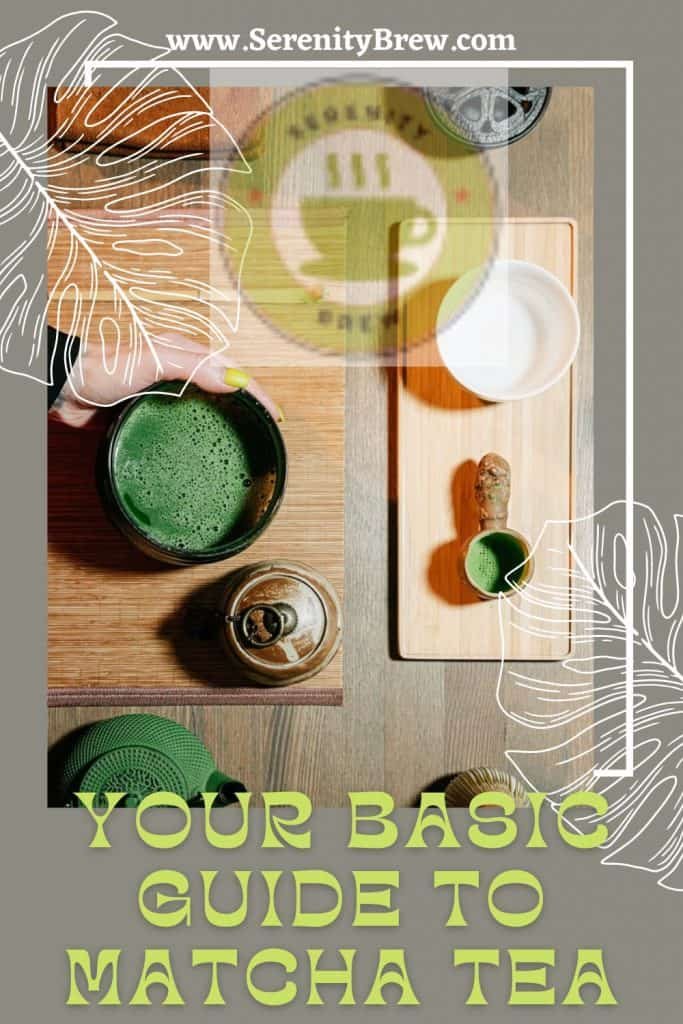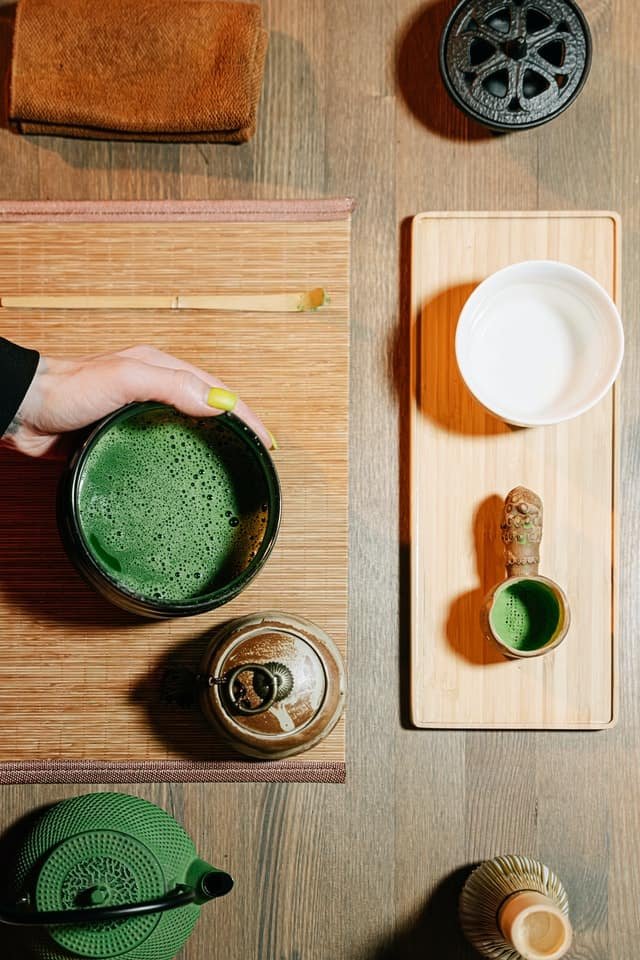
Matcha tea seems to be everywhere these days: matcha ice cream, matcha filled croissants, matcha flavored kit kats… even matcha beer or liqueur.
We suppose that this certifies that this exquisite green tea became the umpteenth fashionable drink. Call us purists, but we stick with the tea.
In the following article, we would like to get beyond fads and journey to the origins of true matcha, which has centuries of tradition behind it and is revered in Asia for its health benefits. Can you come with us?
What is matcha tea
Matcha is one of the most famous Japanese green teas. If you open a pot of matcha, the first thing you will ask yourself is where are the leaves and, the most distinctive feature of this tea is that it is powder.
During its preparation, the tea leaves are crushed very finely until obtaining a fine powder of an alien green color.
Being powdered and unlike other teas, matcha is not discarded but consumed with its infusion. In other words, when you drink a cup of matcha you are ingesting, along with the infusion liquid, the powdered leaves of the tea plant.
Matcha is an eminently Japanese tea. It is produced mainly in the regions of Uji, in Kyoto, and in Nishio, in Aichi. The Japanese impose strict regulations on the cultivation of tea to ensure its quality.
How to get matcha
As in all teas, the process begins in the plant. In this case, there is a pre-harvest step in which the tea plants are covered with a cloth for a few weeks.
By reducing photosynthesis, the plant reduces its growth and increases chlorophyll levels. This causes the levels of some amino acids such as theanine to increase and affects the taste of the tea.
An important factor for any green tea is the low degree of oxidation. The Chinese usually roast the tea in a wok to stop the oxidation process of the leaves, they call this “killing the green”. For their part, the Japanese often use steam.
To make matcha, the harvested tea leaves are steamed to stop the oxidation process at just the right moment. Thanks to this, the leaves maintain a bright green color, and their fragrance and nutritional components are almost intact.
The leaves are then left to dry before being passed through machinery that separates and removes the stem and veins from the leaf. Once separated from the hard parts, the result is known as tencha and, in fact, it is a variety of tea that is already consumed in this form.
The final step in making matcha is to grind the tencha. The traditional way used a millstone, but today automated methods are used. The matcha is ground, very, very fine. The process can take over an hour to prevent the millstones from heating up and altering the flavor of the tea.
The result: a bright green powder with a talc-like texture.
What does matcha taste like
Matcha is a green tea, and as such has some of the usual plant-based aromas in the family. It reminds some of algae or moss.
Matcha is often said to have umami, the fifth taste your palate can recognize besides salty, sweet, bitter, and sour, though you may not have known it.
Umami means tasty in Japanese, and matcha is intense, malty and earthy in flavor. Those of higher quality provide a greater degree of sweetness.
The texture of a cup of matcha is determined by the characteristic preparation of this tea, in which the powder of the tea leaves is consumed. This makes the body of this infusion creamy and velvety.
Tradition
Do you know the Japanese tea ceremony? We suggest the following video. Basically, it is about the preparation and consumption of tea according to strict traditional rules, rooted in Zen Buddhism. Why not guess which tea is consumed in the ceremony?
You guessed right! Matcha, but not just any matcha. The quality of the tea, in fact, is determined according to its use. The matcha used in the ceremonies is known as ceremonial grade matcha, which means that the matcha powder is of a high enough quality to be used in the tea ceremony.
What history does it have
Like so many other times, to go back to the origins of matcha tea we must travel back in time to ancient China.
During the Tang Dynasty (618 – 907), tea used to be steamed and pressed into bricks for easy storage and exchange. For its consumption, it was roasted, pulverized and boiled in the form of a decoction. It also seems that at that time it was customary to add salt to the concoction… What a soup, isn’t it?
Later came the Song (960 – 1279) and during their reign the custom of preparing tea powder by stirring it with hot water in a bowl became popular. From this point on, Zen monks turned this custom into a ceremony and spread it wherever they traveled.
In Japan, the custom took deep root in the monasteries and became a celebration appreciated by the upper classes. Although the practice of drinking powdered tea disappeared from China, Japan kept it.
Composition and health benefits
Drinking a cup of matcha means consuming a few grams of powdered green tea leaves. Therefore, consuming matcha is a concentrated way to drink green tea and get all its beneficial effects.
Matcha contains a large amount of vitamins, minerals, amino acids, and antioxidants such as polyphenols and catechins. It also has a high concentration of caffeine, much more than other teas. This makes it not recommended for people with a greater sensitivity in this aspect or in special circumstances such as motherhood or lactation.
Matcha also stands out for its high content of theanine, a component with anti-stress effects. The fact of covering tea plants with a cloth before harvesting reduces photosynthesis and increases the concentration of this element.
Preparation
Matcha is not brewed like most teas. The traditional way of preparing matcha requires the tea bowl (chawan) and the bamboo brush to whisk it (chasen).
After tempering the bowl, add a measure of tea and a little water at a temperature of around 85º. Next, beat vigorously until there are no lumps and foam appears on the surface. Then, it is watered until it reaches the size of the bowl and it is beaten again.
The internet is loaded with alternative and less traditional methods of making matcha without the traditional junk. A very simple one is to put the tea and a little water in an empty bottle or shaker leaving enough space so that the mixture can be shaken easily.
Foods with matcha

The culinary use of matcha is relatively modern. Japanese gastronomy has been a pioneer in incorporating matcha as one more ingredient to give flavor and a spectacular green color to foods such as mochis, noodles, ice cream, cookies, milkshakes, chocolates and an infinity of recipes, most of them sweets.
Now yes, we ended up going beyond tea. If you like the taste of matcha and you are a cook, you can try all these recipes. If you are one of those who do not like to get their hands dirty, perfect! We recommend the Takashi Ochiai pastry shop in Barcelona. The matcha filled croissants are amazing.
